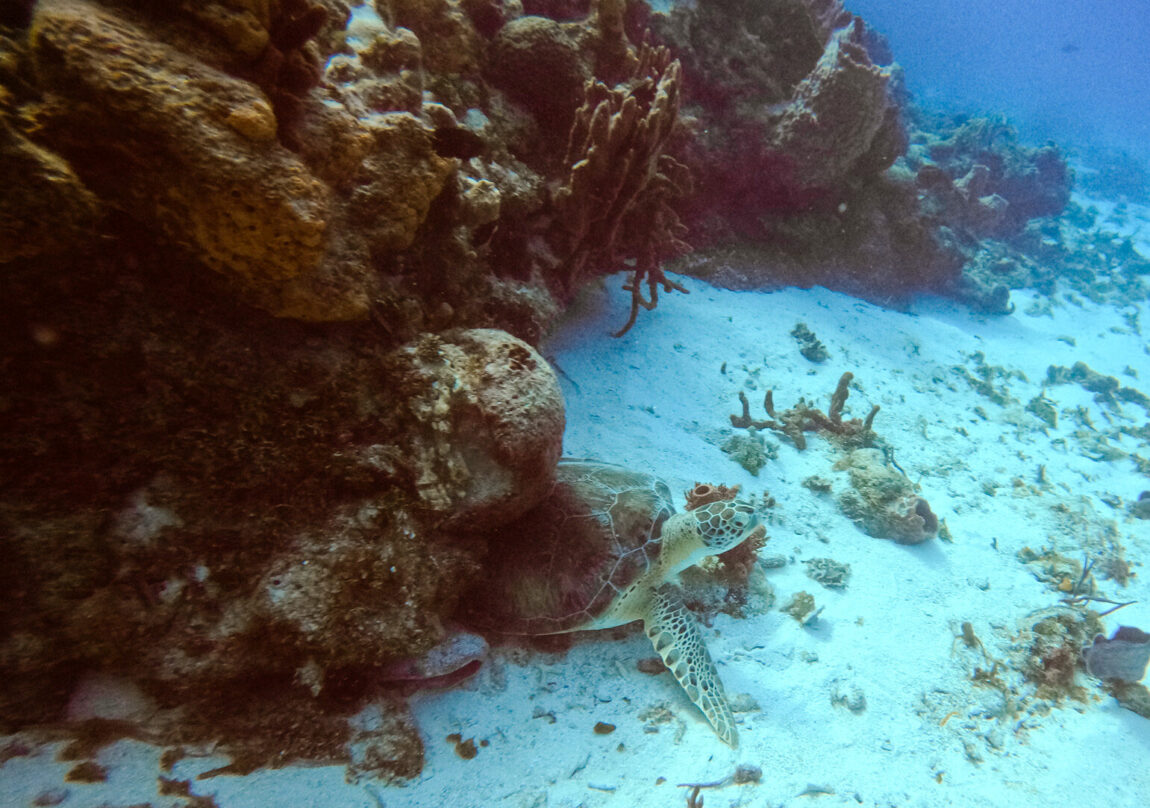
Guide to Scuba Diving in Cozumel
Nestled off the eastern coast of Mexico’s Yucatán Peninsula, Cozumel stands as the largest island in the Mexican Caribbean, surrounded by a diverse ecosystem that captivates divers from around the globe. In this comprehensive guide to scuba diving in cozumel, I’ll delve into the reasons why Cozumel holds a special place in the hearts of scuba enthusiasts. Whether you are a seasoned diver or a beginner eager to explore the depths, lets discuss the best dive sites, reputable dive operators, essential tips for a safe and unforgettable scuba diving experience in this Caribbean gem.
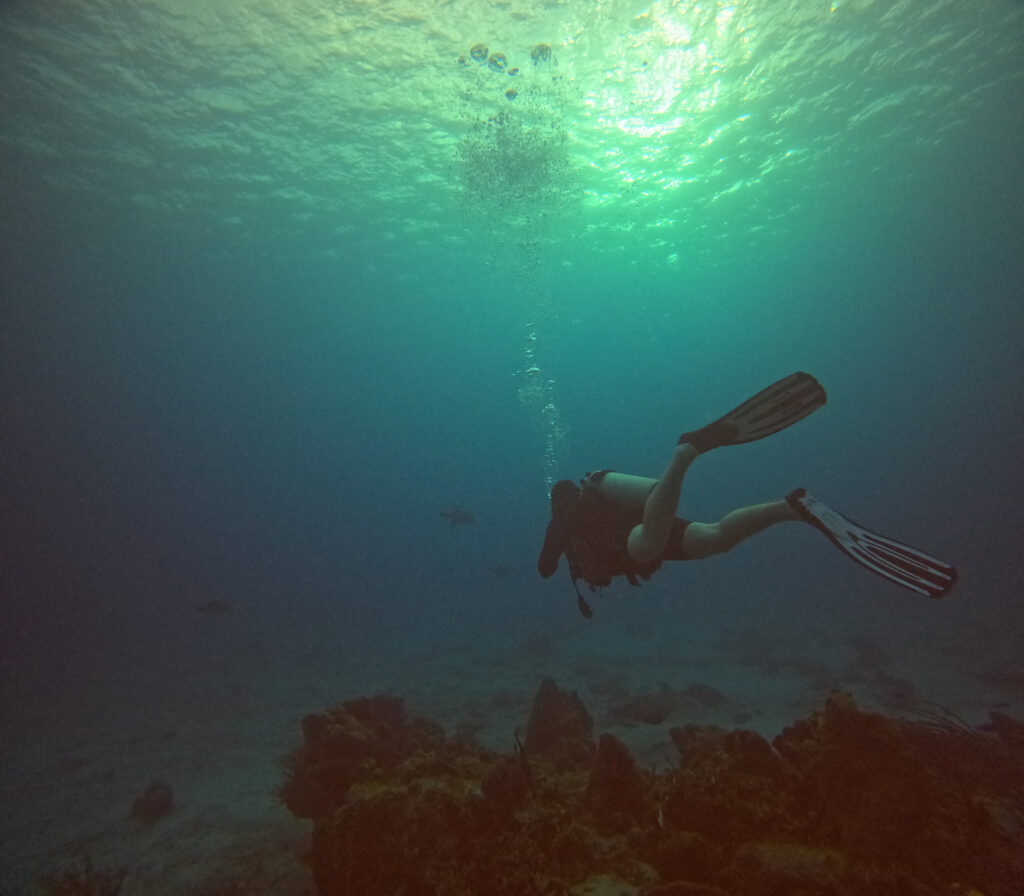
Why Cozumel for Scuba Diving
Cozumel is often regarded as the 2nd best location in the world for scuba diving, falling just behind the Great Barrier Reef, in Australia. I have yet to make it to Australia, so I can’t compare, but Cozumel diving is beautiful and an absolute MUST!
Rich Marine Life:
- A stunning variety of fish, including parrotfish, angelfish, puffer fish, and schools of tropical fish in beautiful colors
- Majestic sea turtles gliding through the water
- Occasional visits of nurse sharks and eagle rays
- Eels, seahorses, barracuda, & much more!
Visibility & Water Conditions:
- Crystal-clear waters allow for visibility that can extend beyond 100 feet
- Consistently warm water temperatures, typically ranging between 77°F to 82°F (25°C to 28°C),
- Comfortable water environment year-round
- Minimal currents and excellent underwater visibility
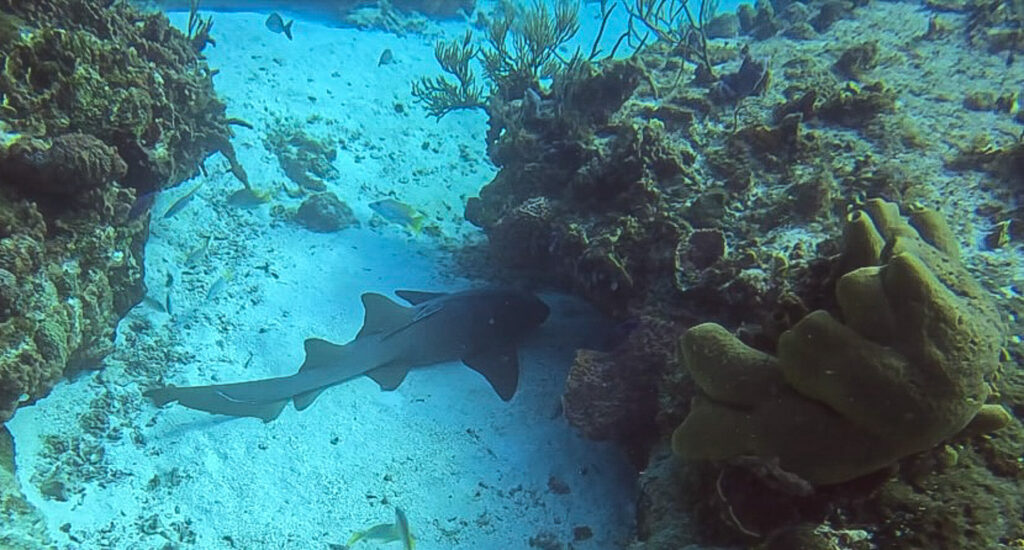
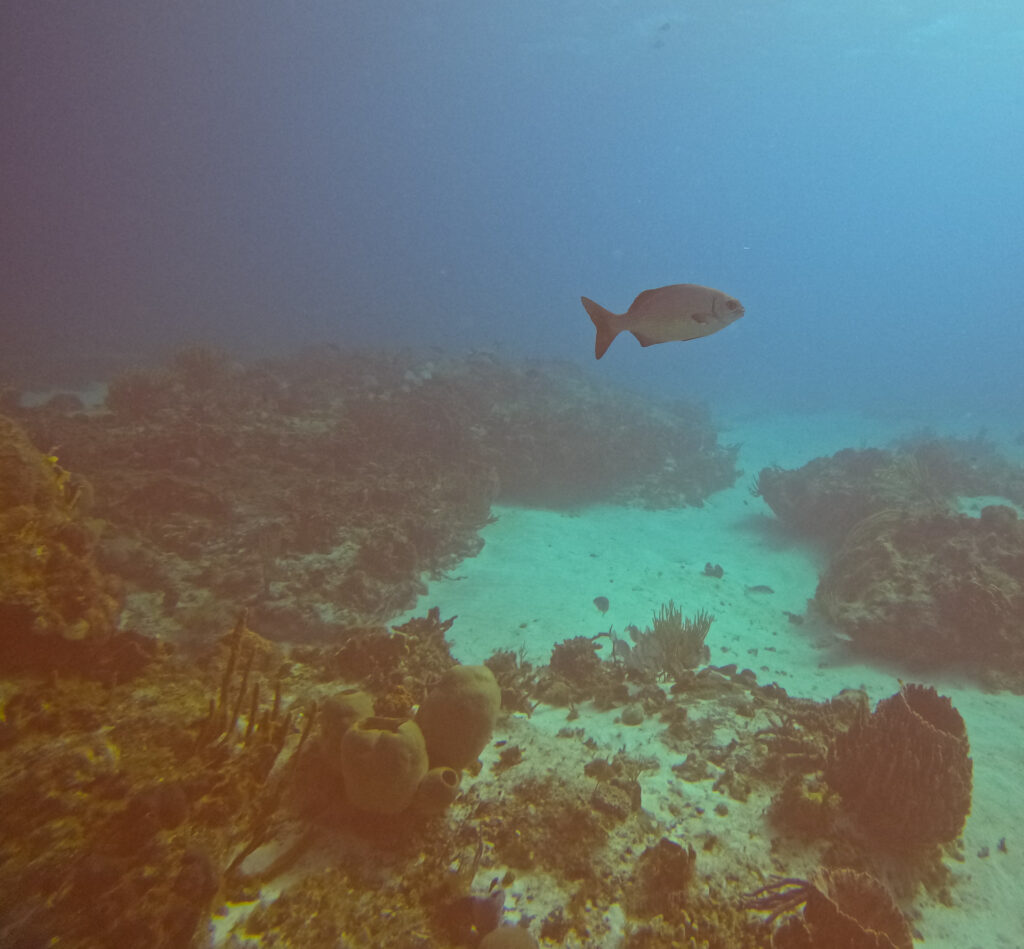
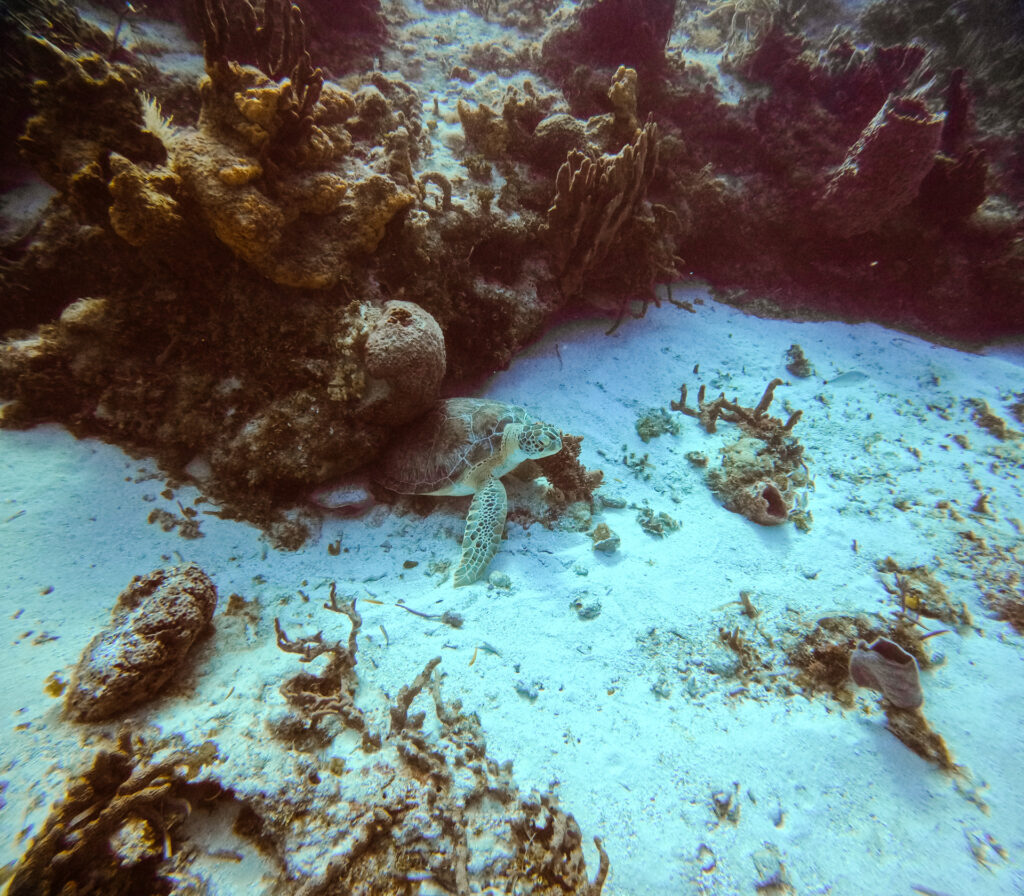
Best Times to Visit Cozumel for Diving
Dry Season (Late November to Mid-April):
- Ideal Weather Conditions: Cozumel’s dry season, spanning from late November to mid-April, is characterized by sunny days and lower humidity levels. This period provides optimal weather conditions for both diving and topside activities.
- Crystal-Clear Waters: During the dry season, the island experiences reduced rainfall, leading to excellent underwater visibility. Divers can enjoy crystal-clear waters, making it an ideal time for capturing stunning underwater photographs and encountering marine life with enhanced clarity.
- Mild Currents: The dry season typically sees milder currents, creating more comfortable diving conditions, especially for those new to underwater exploration.
Whale Shark Season (May to September):
- Thrilling Encounters: If your diving bucket list includes swimming alongside the gentle giants of the ocean, plan your visit between May and September. Cozumel becomes a hub for whale shark encounters during these months, offering a unique and exhilarating experience for adventurous divers.
Off-Season (October):
- Potential for Storms: October marks the transition between the wet and dry seasons, making it an off-peak month for diving. While diving is still possible, divers should be aware of the potential for tropical storms and higher chances of rainfall during this period.
- Quieter Atmosphere: If you prefer a more tranquil diving experience and are willing to monitor weather forecasts closely, visiting Cozumel in October might offer a quieter atmosphere with fewer tourists.
- Peak Tourist Season: While Cozumel is a popular destination year-round, peak tourist season in Dec – Feb. If you prefer to avoid the busiest times, November and April are great shoulder months.
- Busy Bee Tip: We visited in January and had an AMAZING dive experience. We saw multiple turtles, sharks, puffer fish, eels, a seahorse, stingrays, barracudas, and so much more. We only dove with one other couple in our group & the guide we had was awesome. He specifically picked dive sites to avoid the large amounts of tourists during January.
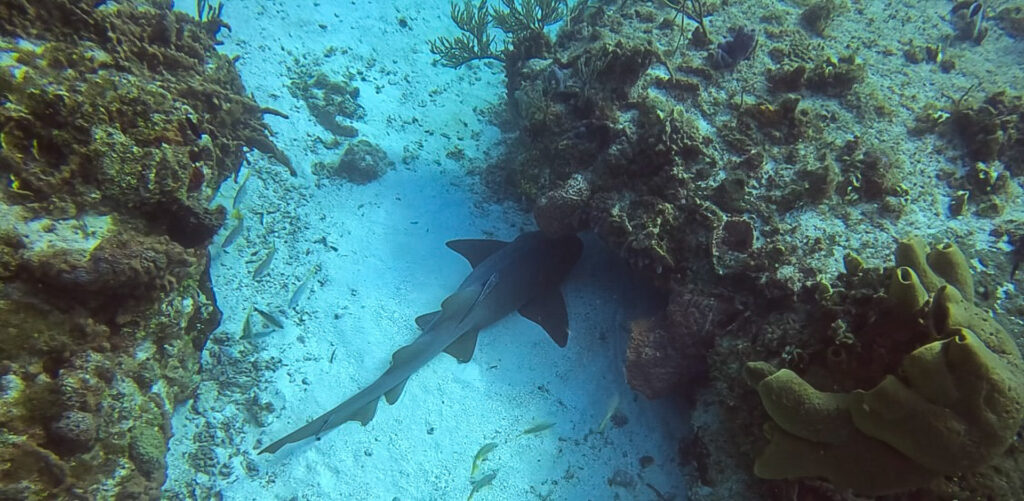
Best Dive Sites in Cozumel
- Palancar Reef:
- An icon among Cozumel’s underwater wonders
- Sprawling coral formations & intricate swim-throughs
- Vibrant sponges, towering coral pinnacles, and an abundance of marine life
- Home to sea turtles, nurse sharks, and schools of tropical fish, creating a kaleidoscopic panorama for divers
- Santa Rosa Wall:
- Ocean floor dramatically plunges into the abyss, revealing a vertical underwater wall.
- Divers can descend along this sheer drop-off, exploring crevices and overhangs adorned with colorful coral formations. The wall is a canvas for marine life, with large sponges, sea fans, and gorgonians providing a striking contrast to the deep blue backdrop.
- Larger species, such as eagle rays and reef sharks
- Ocean floor dramatically plunges into the abyss, revealing a vertical underwater wall.
- Punta Sur:
- Fascinating blend of coral formations, canyons, and swim-throughs.
- Divers can explore the dramatic drop-offs and encounter a variety of marine life, including barracudas, groupers, and moray eels
- The currents around Punta Sur attract sharks and other pelagic species
- Other Notable Sites: In addition to the iconic sites mentioned above, Cozumel offers a treasure trove of other notable dive spots.
- Explore Columbia Reef, known for its breathtaking coral formations and tunnels.
- Dive enthusiasts can also venture to Tormentos Reef, celebrated for its marine life diversity
- Try out Chankanaab Reef, where seahorses and colorful nudibranchs can be spotted.
Each site has its unique charm, whether it’s the intricate coral gardens, diverse marine species, or underwater caves. These additional sites ensure that divers can tailor their underwater adventures to their preferences, ensuring a variety of experiences in Cozumel’s underwater playground.
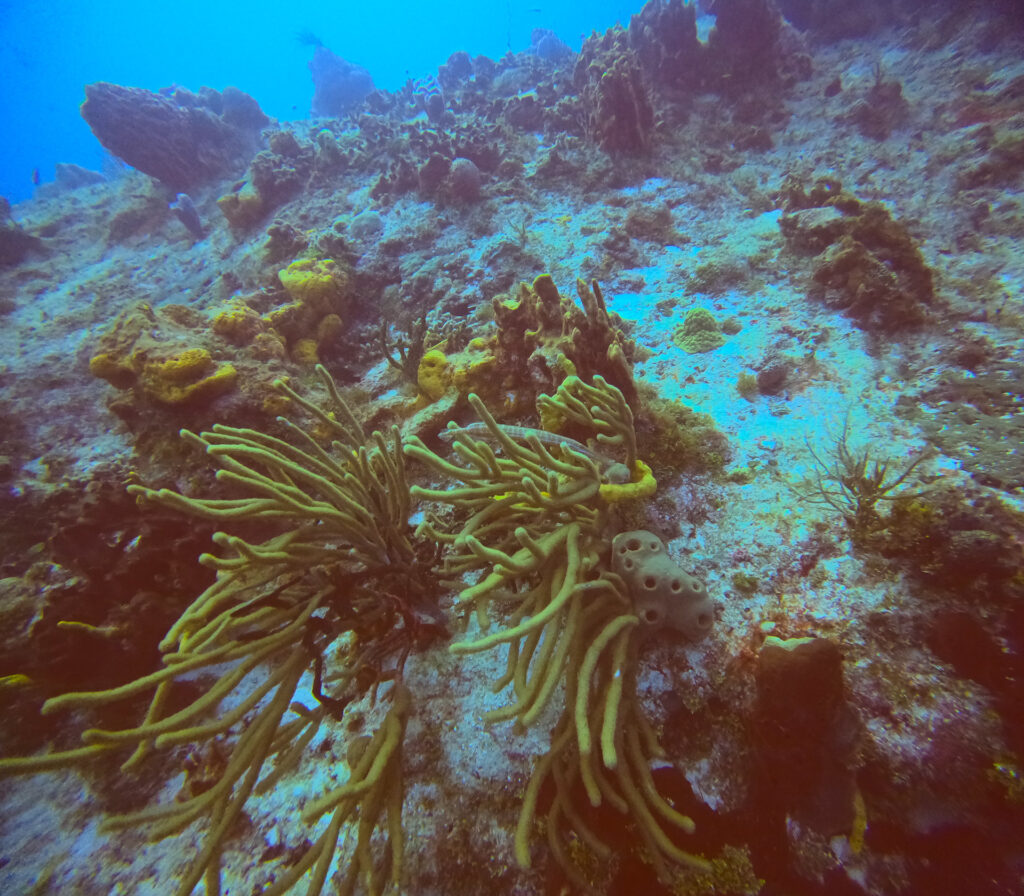
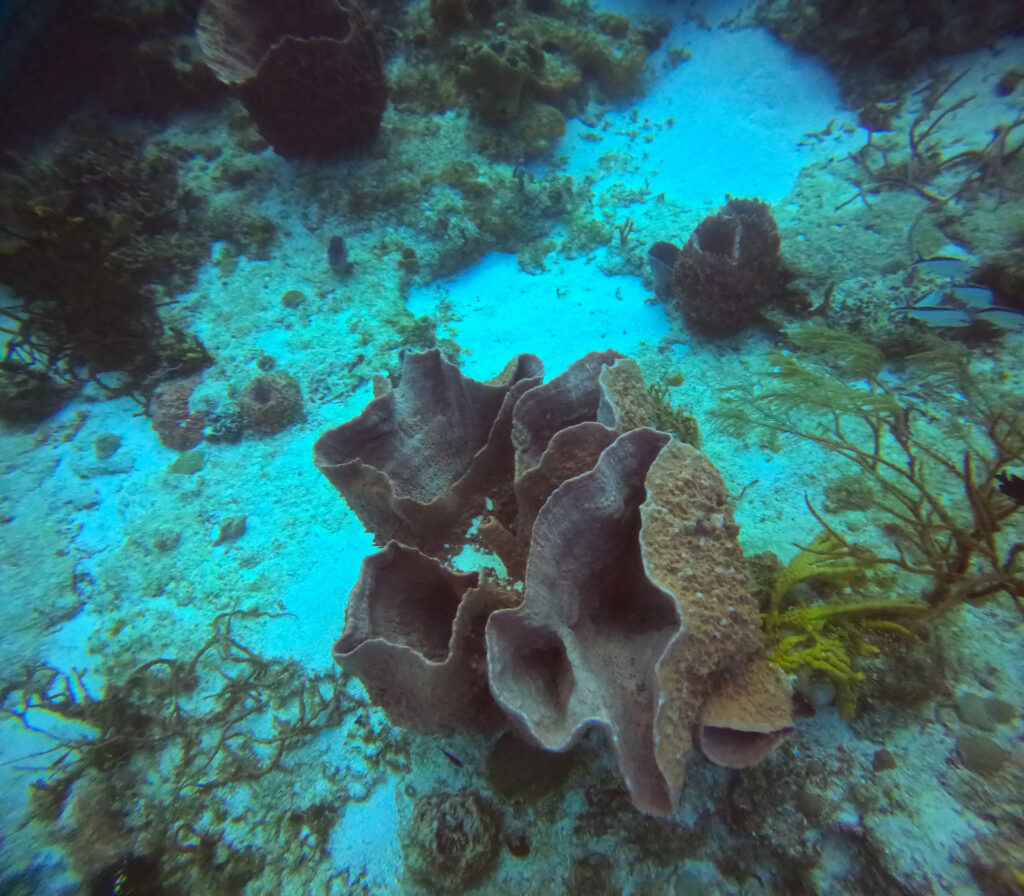
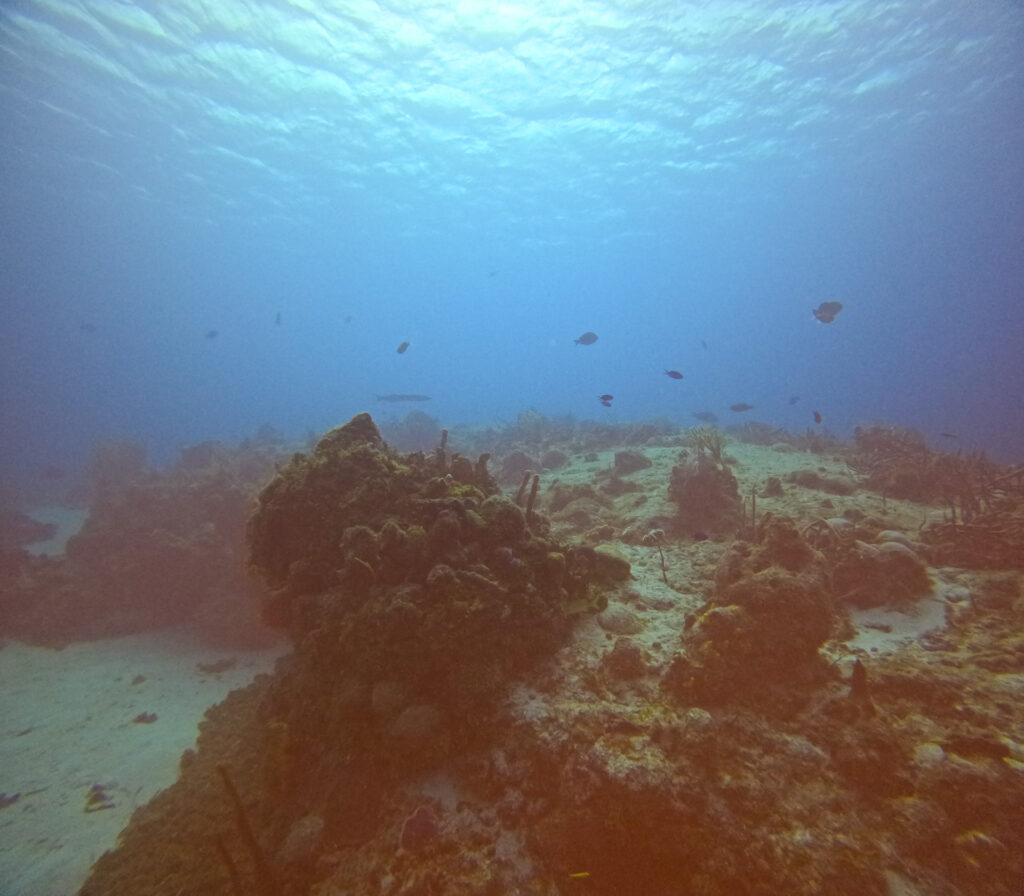
Dive Operators & Shops
- ScubaTony: This is who we dove with and the experience from start to finish was great. Our guide was extremely knowledgable & even seemed to know where particular marine life likes to hide, so he could point it out to us very easily. He also specifcally chose our dive sites to avoid the hoards of tourists at other dive sites, allowing us a calmer & more private diving experience.
- Their safety ratings & reviews are the highest I saw on the entire island
- They lead SMALL groups of dives – when we went, we had only one other couple with us, rather than 6-8 other people
- The atmosphere throughout the dive was so friendly. Our boat captain even made up guacamole, chips, and a fruit platter to snack on in between our dives!
- They offer gear rental at a reasonable price so if you’re travelling and can’t pack your own, they’ve got you covered. Their gear was in great condition as well.
- Other shops I heard good things about while I was researching:
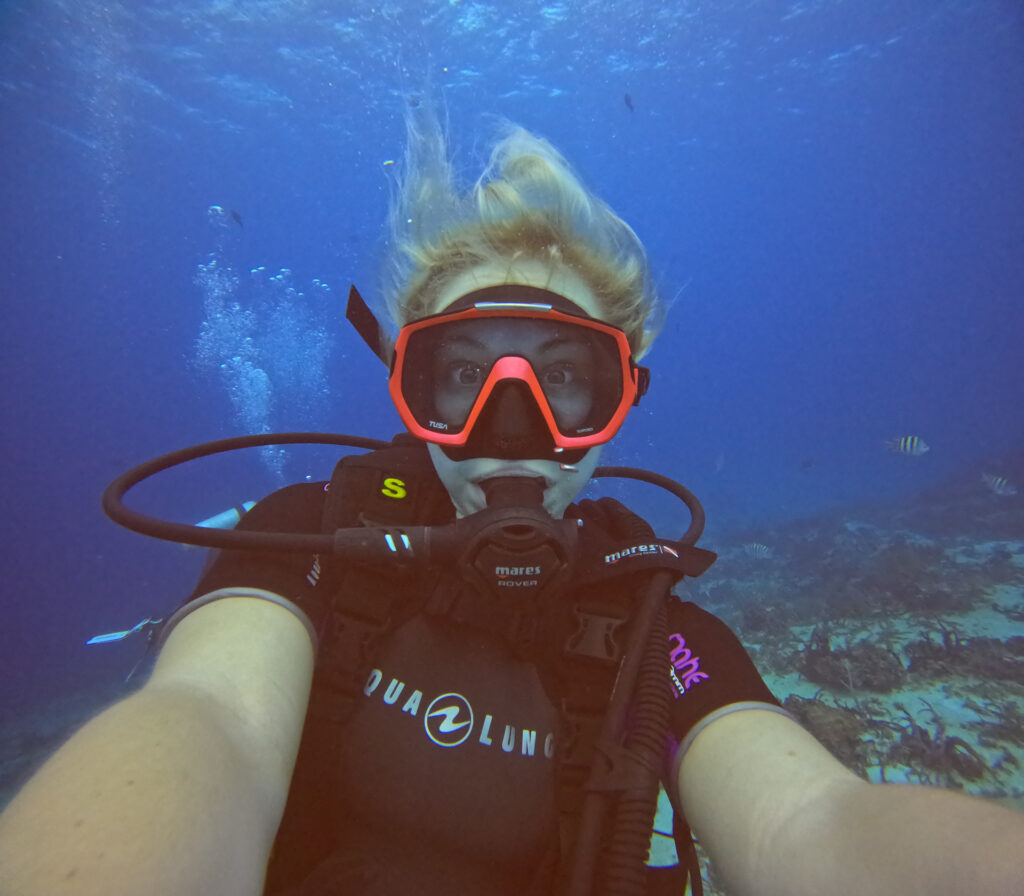
Tips for Underwater Photography & Videography
Invest in the Right Gear
- Underwater Camera: Choose a reliable underwater camera or a waterproof housing for your existing camera to ensure it can withstand the underwater conditions.
- Most under water cameras also require a waterproof housing to dive below certain depths – be sure to check your camera’s specs!
- Sturdy Camera Mounts: Use stable and secure mounts for your camera or action cam to avoid shaky footage and blurry photos.
- Having a good mount option also ensures you don’t drop or lose the camera underwater.
Gear Recommendations
- Camera: All photos for this post were taken with a GoPro Hero 11 & I’m very happy with the quality!
- If you want to see video footage from the dive, check out my Youtube video, which is all about our trip!
- Mount: We use this Floating Handle Mount from Amazon. It’s the perfect accessory for beach trips because it floats, so it can easily be used for snorkeling or swimming around, as well as scuba diving. It also has a small hollow compartment, which is great for storing cash to tip your guides! And it has an adjustable wrist strap, so you can wear on your wrist and not have to worry about dropping or losing it.
- Waterproof Case: Most GoPros are waterproof up to certain depths (be sure to check specifics on your camera), but need a waterproof housing for further depths. We specifically use the GoPro Waterproof Housing, because we don’t want to risk buying an off-brand case and have it not seal properly and ruin our camera.
- Red Filters: Red is the first color to leave your photos when under water. You’ll want a red filter on your camera to add that red color back in and make your photos look as clear as possible. We use this set from Amazon and they’re very easy, affordable, and convenient!
- Memory Cards: You’ll need a memory card or your camera won’t store any pictures or videos. I find the Samsung Micro SD to be perfect – I usually stick with the 256 gb and think it’s plenty of memory. Some of these SD cards come with USB adapters to plug into your computer, if you need that, but with the GoPro app, you can directly upload all media to your phone, so I don’t recommend purchasing those.
Color Correction Underwater
- Red Filter: Red filters are most effective at depths of 10–60 feet when not using an external light. They are designed for blue water conditions, as red is the first color to leave your photos underwater. To keep your photos and videos as clear as possible, consider using a Red Filter.
- Red filters are not ideal for use with a torch. Once you reach a depth where there isn’t as much natural light visibility, you will need to use a torch.
- You should not use a red filter at night or in caves, crevasses, overhangs, wreck penetration, or any other areas that are particularly dark. A red filter won’t help your camera with regards to exposure or color in such dark settings.
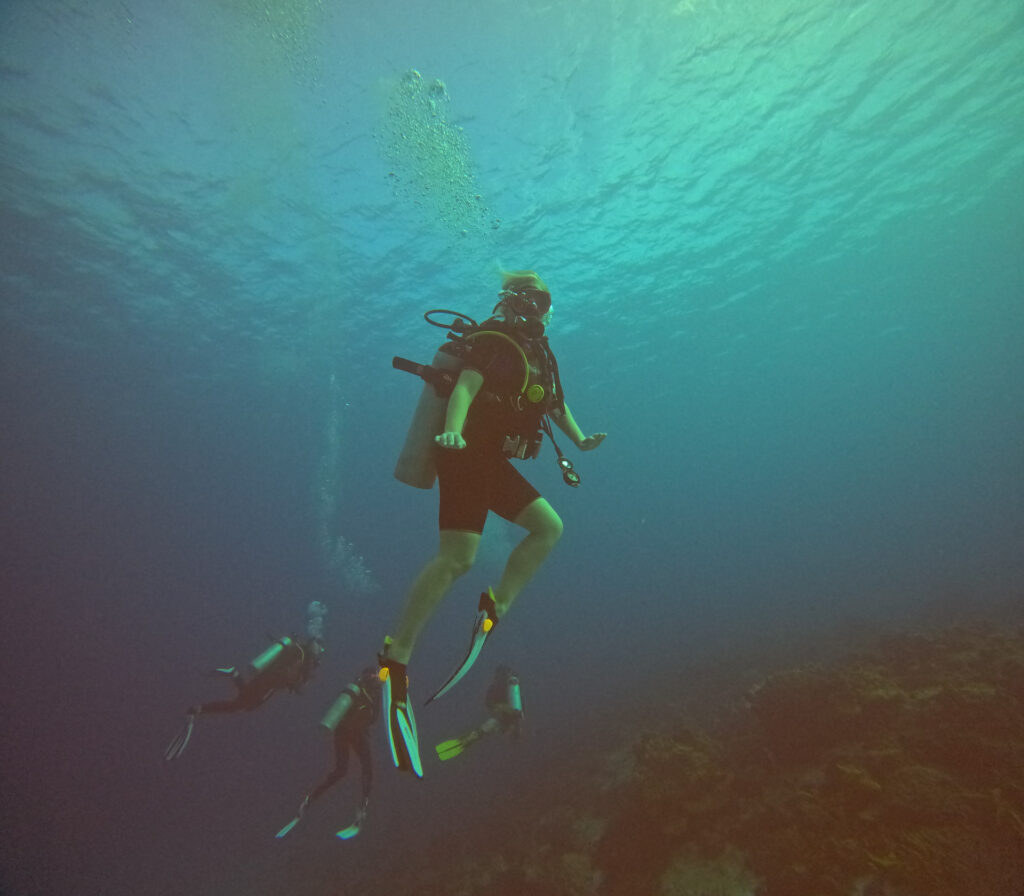
Additional Tips When Visiting Cozumel
- You will need pesos – a lot of places in Mexico do take credit cards now, but a fair amount still don’t. It’s best to keep pesos with you just in case.
- Use reputable ATMs to get pesos. We found the best way to get pesos was just by withdrawing money from our debit card at ATMs. *Make sure you decline the DCC option on the ATM for the best exchange rate.
- ATMs at banks tend to be safest from credit card fraud. We also had good luck at several grocery store ATMs.
- You can actually find reviews about ATMs on google maps.
- Choose ATMs that are well-lit and in populated areas to avoid muggings. Most bank and grocery ATMs feel super safe. A lot of the bank ATMs are enclosed and well-lit & grocery stores are always busy enough to feel secure.
- Bring a change purse or plastic baggy to carry around the coins. Peso coins are so frequently used, and you’ll want somewhere to put them! We had to keep throwing our coins in random bags and pockets because neither of our wallets have coin slots anymore.
- Bring a Visa credit card. Most places throughout Mexico, including the touristy areas, don’t accept American Express, and very few accept Master Card.
- Tell your bank you’ll be travelling to Mexico. This will let them know that the purchases you’re making are real purchases & not fraud. Some banks will freeze or lock your card if they notice suspicious charges, and you don’t want this to happen while you’re on vacation! If you give them a heads up on where you’ll be, this typically won’t happen.
- Learn some Spanish. This probably goes without saying, but atleast try to learn a bit of the language before going.
